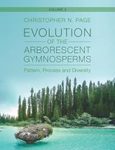Monograph
By: Jeanne Doubinger(Author), Pierre Vetter(Author), Jean Langiaux(Author), Jean Galtier(Author), Jean Broutin(Author)
355 pages, 395 b/w photos and b/w line drawings; 1 b/w fold-out map
![La Flore Fossile du Bassin Houiller de Saint-Etienne [The Fossil Flora of the Bassin Houiller of Saint-Etienne] La Flore Fossile du Bassin Houiller de Saint-Etienne [The Fossil Flora of the Bassin Houiller of Saint-Etienne]]()
Click to have a closer look
About this book
Customer reviews
Related titles
About this book
Language: French with bilingual abstract in English and French, and extended abstract in English
A revision of the Stephanian (Upper Carboniferous) flora from Saint-Etienne is presented. This work is based on re-investigation of about eight thousand specimens of macroflora. Following a detailed historical survey of the geology of the basin, this taxonomic study concerns the macroflora preserved as compressions and permineralizations (97 genera and 252 species) and a study of the microflora. A quantitative analysis based on nearly two thousand compression specimens establishes that the Rive de Gier (lowermost) flora of the basin is distinct from all the others by the relative abundance of arborescent lycopsids which abruptly decrease and disappear in more recent strata. Sphenopsids and cordaites are a regular element of the flora whilst tree-ferns are the dominant element before the medullosan pteridosperms. The palynological analysis confirms the contrast between the assemblage from the Rive de Gier Formation and the overlying strata, suggesting the presence of only two main palynostratigraphic units. Finally, considering that no other contemporaneous deposit has yielded a richer flora, we propose that the whole upper Formation of Saint-Etienne (i.e. overlying the Rive de Gier Formation) should be used as a biostratigraphic reference for the unnamed upper stage of the Stephanian series. The name ‘Forezian’ is proposed for this stage which would replace the previous "Stephanian B-C".
Summary in French:
Une révision de la flore du Stéphanien (Carbonifère supérieur) de Saint-Étienne est présentée. Elle est fondée sur le ré-examen d'environ huit mille spécimens de macroflore en compression ou perminéralisés. Un historique détaillé des études sur la géologie du bassin précède l'étude taxonomique qui concerne la macroflore (97 genres et 252 espèces) ainsi qu'une description de la microflore. Une analyse quantitative a eté réalisée sur près de deux mille spécimens en compression. Il est démontré que la flore de la Formation de Rive de Gier (la plus ancienne dans le bassin) est distincte de toutes les autres par l'abondance relative des lycophytes, lesquelles déclinent brutalement et disparaissent dans les niveaux sus-jacents. Les sphénophytes et les cordaites sont un composant régulier de la flore alors que les fougères arborescentes en sont l'élément dominant devant les Ptéridospermales Medullosaceae. L'analyse palynologique confirme le contraste entre la Formation de Rive de Gier et les niveaux sus-jacents suggérant la présence dans le bassin de deux unités palynostratigraphiques. Finalement, compte-tenu du fait qu`aucun autre niveau contemporain n`a livré une flore aussi riche, nous proposons que la Formation supérieure de Saint-Étienne (au dessus de Rive de Gier) soit utilisée comme référence biostratigraphique pour l'étage supérieur (jusqu'ici resté sans nom) de la série stéphanienne. Le nom de "Forézien" est proposé pour cet étage qui remplace le precédent "Stéphanien B-C".
Customer Reviews
Monograph
By: Jeanne Doubinger(Author), Pierre Vetter(Author), Jean Langiaux(Author), Jean Galtier(Author), Jean Broutin(Author)
355 pages, 395 b/w photos and b/w line drawings; 1 b/w fold-out map





![La Flore Fossile du Bassin Houiller de Saint-Etienne [The Fossil Flora of the Bassin Houiller of Saint-Etienne] La Flore Fossile du Bassin Houiller de Saint-Etienne [The Fossil Flora of the Bassin Houiller of Saint-Etienne]](http://mediacdn.nhbs.com/jackets/jackets_resizer_xlarge/61/61163.jpg?height=620)
![La Flore Fossile du Bassin Houiller de Saint-Etienne [The Fossil Flora of the Bassin Houiller of Saint-Etienne]](http://mediacdn.nhbs.com/jackets/jackets_resizer/61/61163.jpg)




![Le Lagerstätte de La Voulte: Un Environnement Bathyal au Jurassique [The Lagerstätte of La Voulte: A Bathyal Environment in the Jurassic]](http://mediacdn.nhbs.com/jackets/jackets_resizer_medium/18/183483.jpg?height=150&width=118)

![La Flore Fossile du Bassin Houiller de Saint-Etienne [The Fossil Flora of the Bassin Houiller of Saint-Etienne]](http://mediacdn.nhbs.com/jackets/jackets_resizer_medium/61/61163.jpg?height=150&width=120)














![Les Crustacés Décapodes des Petites Antilles: Avec de Nouvelles Observations pour Saint-Martin, la Guadeloupe et la Martinique [The Crustacean Decapods of the Lesser Antilles: With New Observations for Saint-Martin, Guadeloupe and Martinique]](http://mediacdn.nhbs.com/jackets/jackets_resizer_medium/24/245203.jpg?height=150&width=106)


![Flora of Cambodia, Laos and Vietnam, Volume 36 [Faune et Flore Tropicales, Volume 47]](http://mediacdn.nhbs.com/jackets/jackets_resizer_medium/24/245033.jpg?height=150&width=101)
![Flora of Cambodia, Laos and Vietnam, Volume 37 [Faune et Flore Tropicales, Volume 52]](http://mediacdn.nhbs.com/jackets/jackets_resizer_medium/26/266628.jpg?height=150&width=103)
![Les Chauves-Souris de Guyane [The Bats of French Guiana]](http://mediacdn.nhbs.com/jackets/jackets_resizer_medium/13/134247.jpg?height=150&width=100)
![Atlas des Mammifères Sauvages de France, Volume 3: Carnivores et Primates [Atlas of Wild Mammals of France, Volume 3: Carnivores and Primates]](http://mediacdn.nhbs.com/jackets/jackets_resizer_medium/26/263780.jpg?height=150&width=106)



